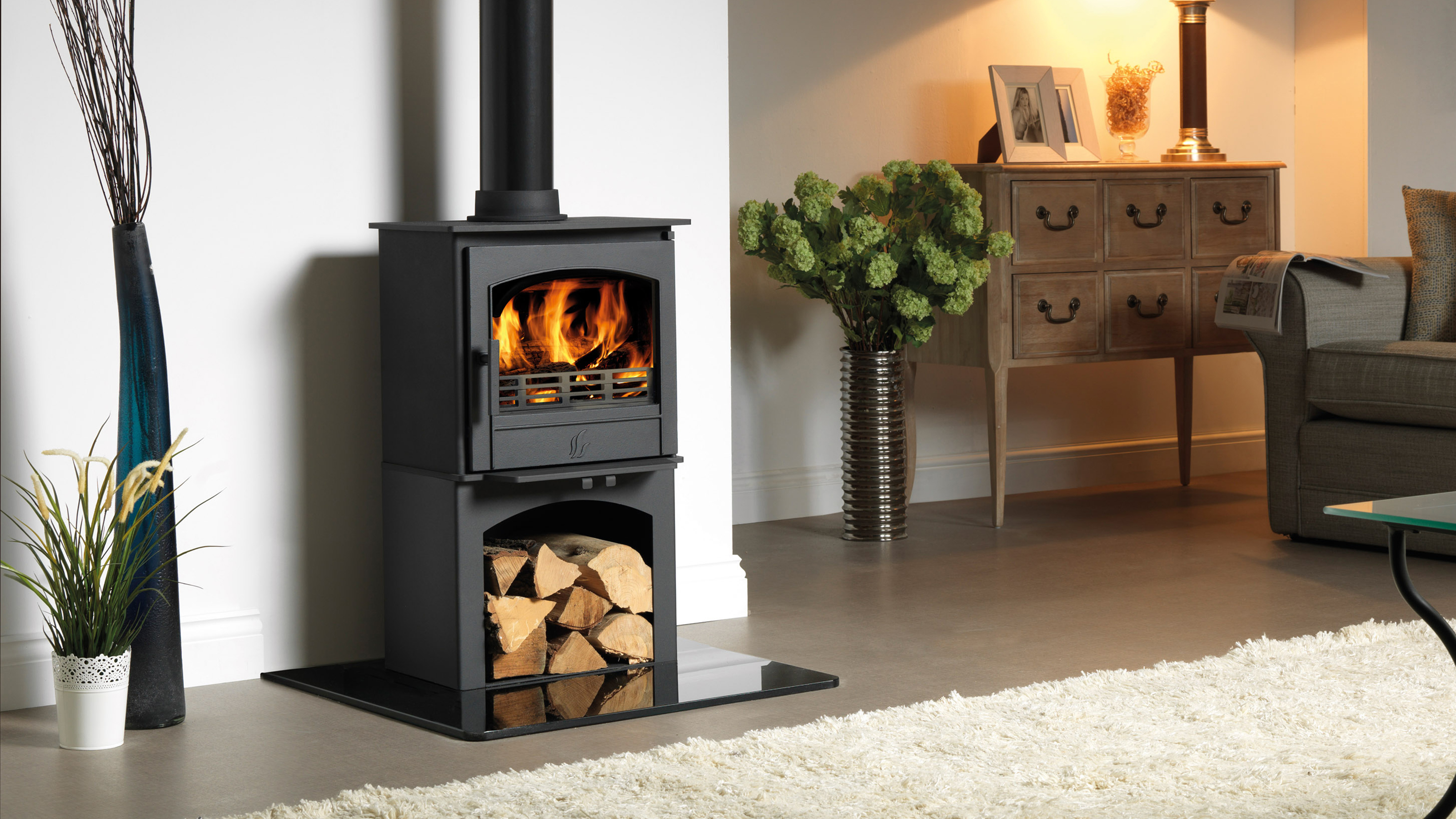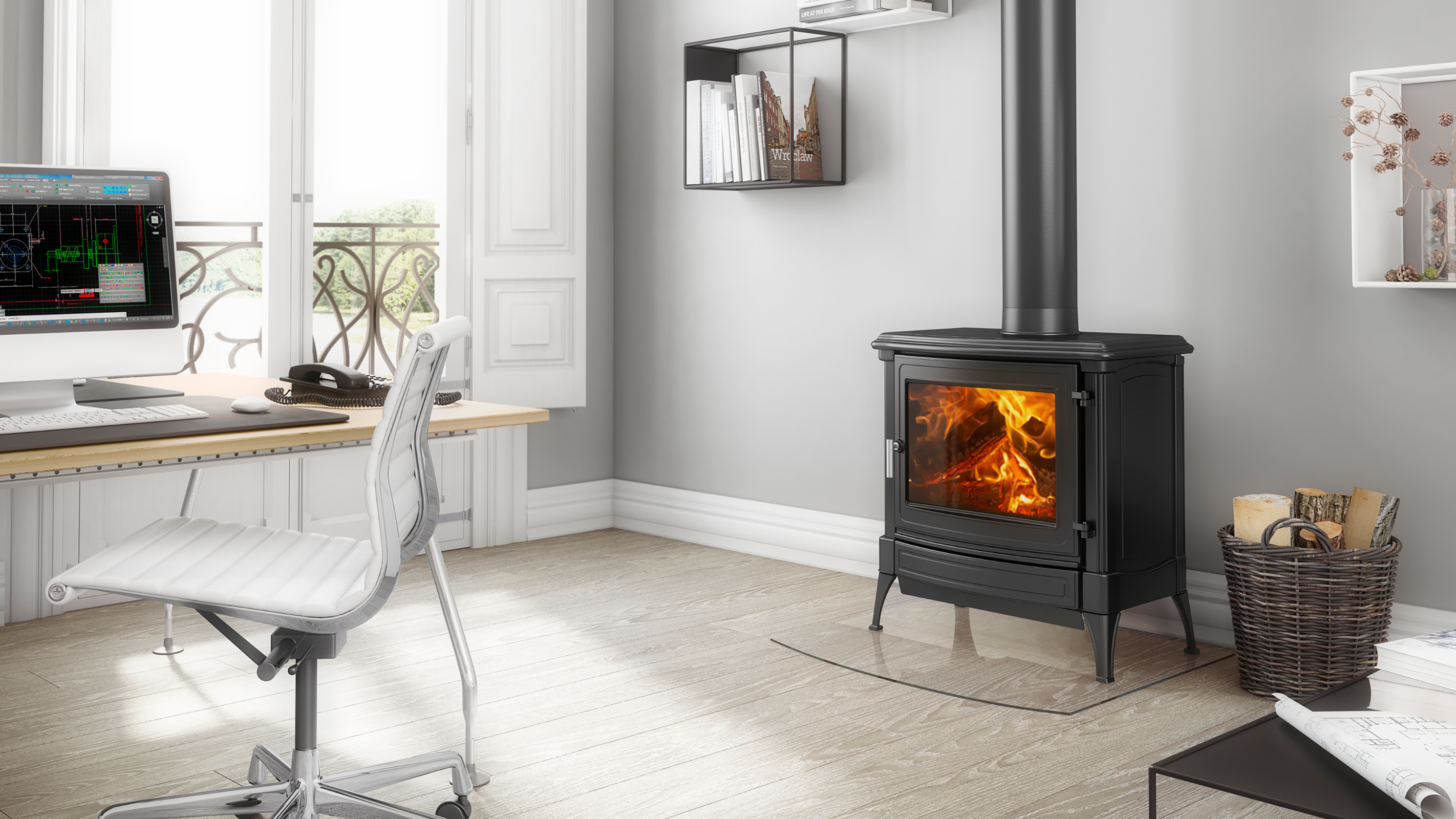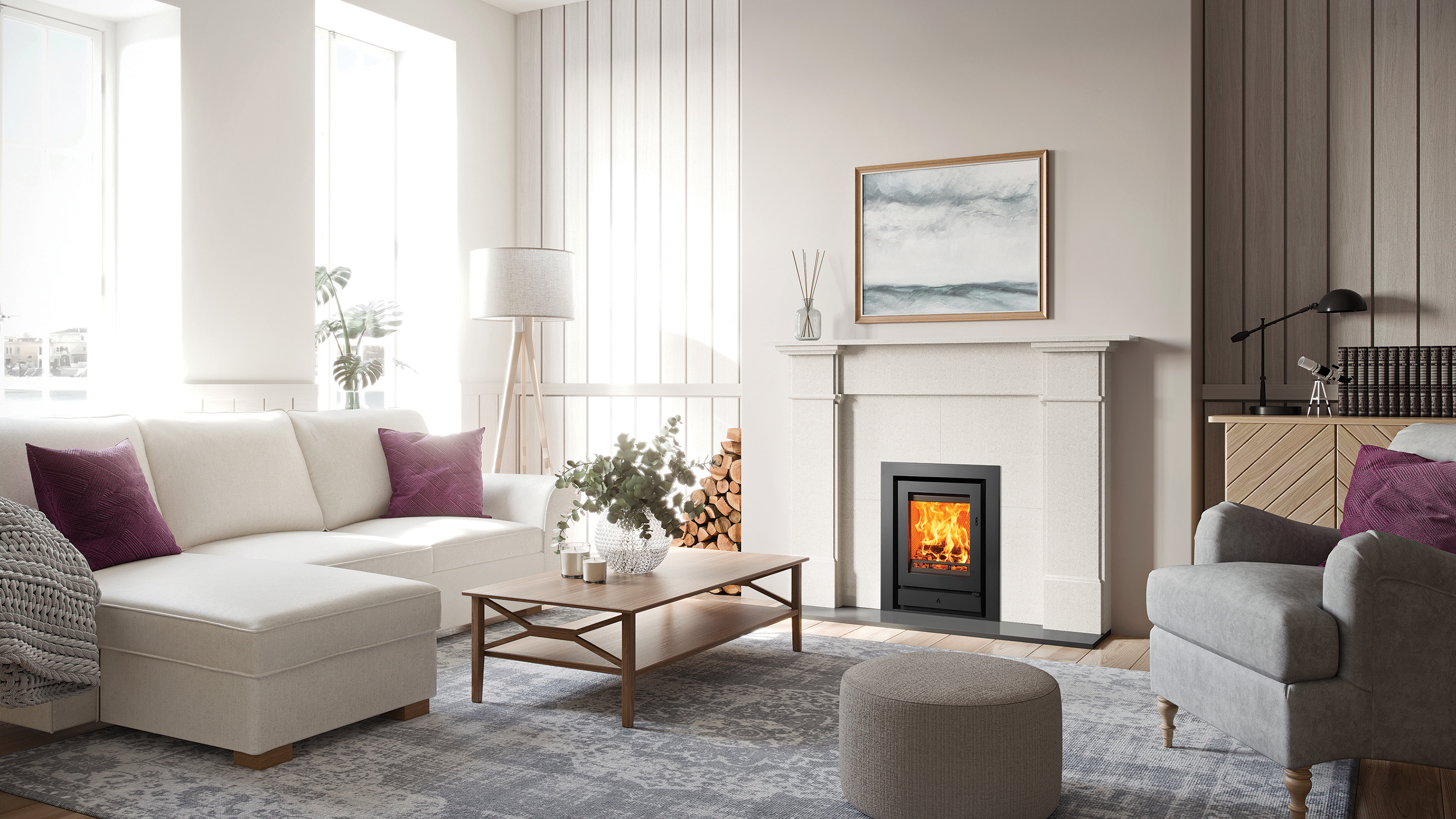Can you burn coal in a log burner? What fuels you can use in your stove
Can you burn coal in a log burner? Is this fuel type suitable for wood burning stoves or will using coal simply cause avoidable issues? We investigate

Can you burn coal in a log burner? It is question commonly asked by those who find they have a stash of unused house coal lying around and are wondering whether they can use it up in their new wood burning stove.
However, it is important to be aware of not only the effect burning the wrong fuel in log burning stoves could have on their overall operation and performance, but also of whether or not using it could pose a health risk or be breaking any laws.
Wood burning stoves and their efficiency have been making headlines of late, but if you are amongst the many people now purchasing one in a bid to cut energy bills, it is crucial that you understand the implications of using the wrong kind of fuel.
In this quick guide, we take a look at which types of fuel you can use in a log burner, as well as which woods are best to burn for maximum heat output and efficiency.
Can you burn coal in a log burner?
The simple answer is no, do not use house coal in a log burner.
There are several reasons why people think about burning coal in a log burner. Perhaps you have inherited a stock of coal from the previous owners of a house or still have some knocking around from before you invested in your new wood burning stove.
However, it really is a rather bad idea to start shovelling coal into your log burning stove — the clue is in the name and this is , in fact, something you should avoid doing at all costs.
"There are two main types of stove; multi-fuel stoves and wood burning stoves," explains Erika Malkin of Stove Industry Alliance. "You can burn both wood logs and smokeless mineral fuels on a multi-fuel stove, but only wood logs on a wood burning stove."
It's also worth mentioning as a safety point that you should never burn charcoal - very different to coal - in a log burner, multi-fuel stove or any indoor fireplace as it is toxic and releases carbon monoxide as it burns. It is only suitable for using in an outdoor BBQ.
Why can't you burn coal in a log burner?
One of the main reasons why it can be dangerous and detrimental to your log burner to burn coal is because coal gets incredibly hot and in a stove not intended for coal, this could pose a real problem.
"We strongly advise against burning coal in a wood burner," says Chris Baines, MD at Eurostove Ltd. "If the wood burner is a modern one, with a catalyser, the coal will corrode it over time. As well as this, burning coal requires primary air, coming up from below the grate, whereas wood burning stoves use secondary air which comes down from above, so the fire will not burn as well."
In order to burn coal, the stove you choose will need to feature a vented grate to allow it to take in air from beneath — multi-fuel stoves have this kind of grate. Although it is true that some wood burning stoves also have grates, it does not mean they will be the right type to take coal.
"Dedicated woodburners are made for exactly that — to burn wood," states Michael Coke, Biomass Products Development Manager at Stovax. " to burn wood. Multi-fuel appliances include a grate, allowing you to riddle the ash, where it can drop into an ash tray integrated within the stove. On the other hand, wood burns best on a bed of ash — hence this will be incorporated into the stove’s design.
"Additionally, today’s log burners must adhere to Ecodesign requirements for reduced emissions, so it is essential to follow the manufacturer’s instructions for getting the most from your appliance, including burning high quality fuel."
All of which begs the question, why would you want to burn coal? Burning wet wood or coal emits a pollutant called fine particulate matter (PM2.5), which can be inhaled and absorbed by the body, damaging your lungs and other organs. The fumes can also damage your stove.

Can I burn coal in a multi-fuel stove?
Although people do burn coal on multi-fuel stoves it is not something now recommended by the majority of stove companies.
Coal, even house coal, releases large amounts of thick, volatile smoke when it burns, filling up the flue — in fact this smoke can catch alight when it reaches a high temperature. Cracked flue liners and warped grates are just a couple of the issues this can cause.
It is far better (and safer) to use a smokeless fuel instead in your multi-fuel stove — anthracite and other smokeless briquettes are both good options, providing they are HETAS or DEFRA approved. This means that it is certified for being both safe to use and produces low enough emissions to be burnt in a smoke control zone.
"If by coal, we are talking about traditional house coal, then this form of bituminous coal is highly polluting and is actually not permitted to be burnt in smoke control zones — usually urban areas like towns and cities," says Michael Coke. "Should you wish to burn an alternative to wood, today’s multi-fuel stoves and fires are designed to burn approved smokeless fuels, such as anthracite. These look very much like coals, but are approved by DEFRA to be burnt, and have a low sulphur content. Check the online directory to find out if you are in a smokeless zone: https://uk-air.defra.gov.uk/data/sca/"

Is it still legal to burn coal?
There have been recent changes in legislation when it comes to the use of coal in England.
"Since 1st May 2021 sales of bagged traditional house coal in volumes under two cubic meters have been unlawful," explains Erika Malkin. "Traditional house coal can still be purchased from an Approved Coal Merchant but from 1st May 2023 it will no longer be available from them either.
"Manufactured solid fuel will still be available post-1st May 2023 from retail outlets and coal merchants in England."
What is the best wood for log burners?
So, now we know that you should most certainly not be burning coal in your log burner, just what is the best wood to burn in order to ensure your beautiful log burner ideas can be fully realised?
"When choosing wood fuel, always look for the Ready to Burn certification label, or if seasoning wood logs yourself invest in a moisture meter and aim to reduce the moisture content to 20% before burning," says Erika Malkin.
“Wood should have a maximum moisture content of 20%," confirms Chris Baines. "This can be achieved by buying pre-seasoned, or kiln dried wood. A less expensive way would be to buy unseasoned wood, and keep it for approximately 18 months to season it yourself. We recommend a moisture meter to check the moisture content if you buy unseasoned wood.”
Is firewood more expensive than coal?
Although firewood is still cheaper than house coal, given that coal is being phased out, it is perhaps not really an issue. It is also worth bearing in mind that firewood is cheaper than many other fuel types, including electricity.
According to Direct Stoves, a log burning stove costs around a third of the price of electric heating and approximately 13% less than gas central heating for the average household — perhaps one reason why many people are now asking how to replace a gas fire with a wood burner.
"Kiln dried wood logs are currently retailing for between £159 - £190 per cubic meter loose fill," says Erika Malkin. "You can expect to use between 3.5 cubic meters of wood logs between October to April when using your stove in the evening and at weekends."
Get the Homebuilding & Renovating Newsletter
Bring your dream home to life with expert advice, how to guides and design inspiration. Sign up for our newsletter and get two free tickets to a Homebuilding & Renovating Show near you.
Natasha was Homebuilding & Renovating’s Associate Content Editor and was a member of the Homebuilding team for over two decades. In her role on Homebuilding & Renovating she imparted her knowledge on a wide range of renovation topics, from window condensation to renovating bathrooms, to removing walls and adding an extension. She continues to write for Homebuilding on these topics, and more. An experienced journalist and renovation expert, she also writes for a number of other homes titles, including Homes & Gardens and Ideal Homes. Over the years Natasha has renovated and carried out a side extension to a Victorian terrace. She is currently living in the rural Edwardian cottage she renovated and extended on a largely DIY basis, living on site for the duration of the project.

